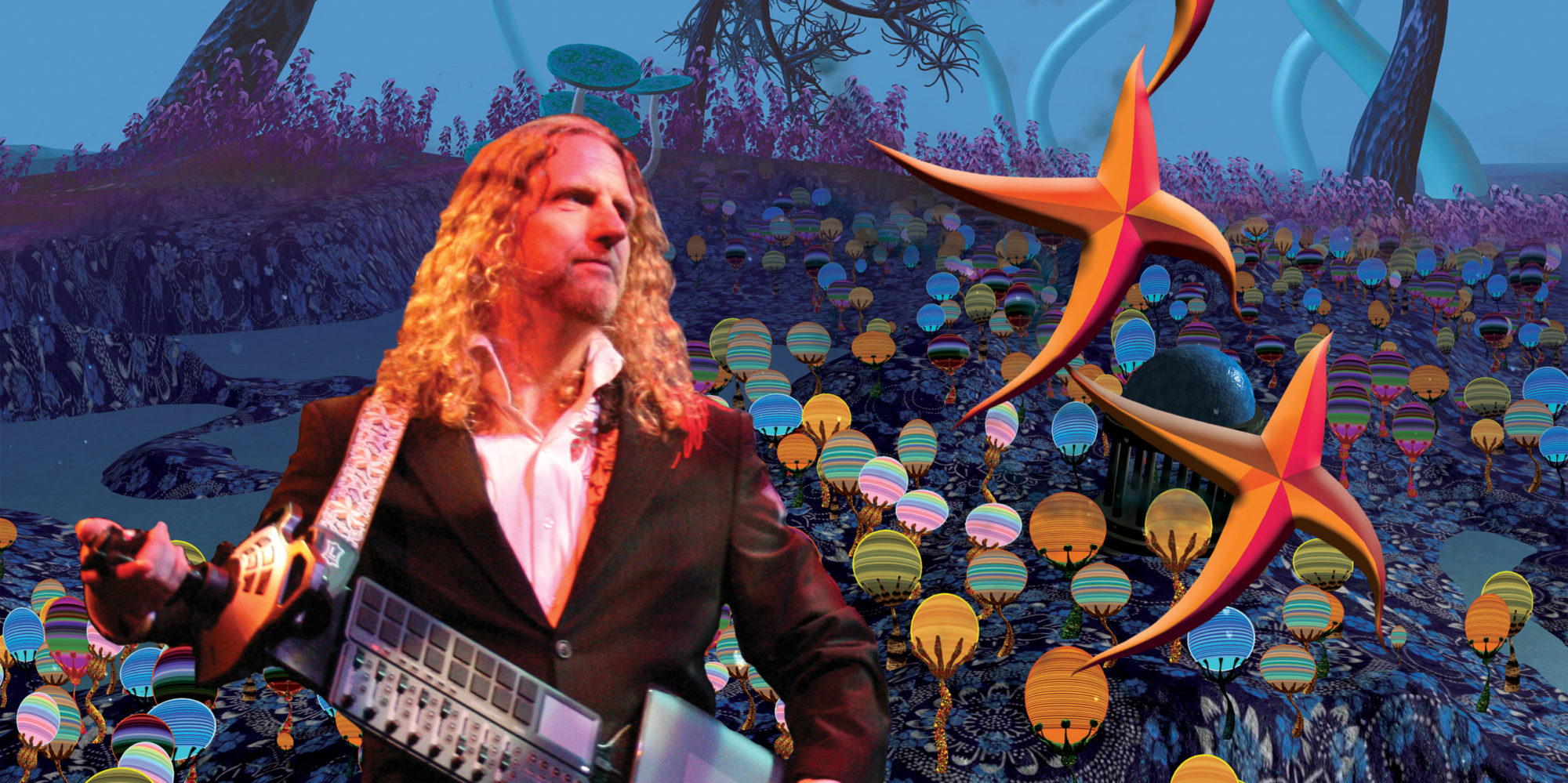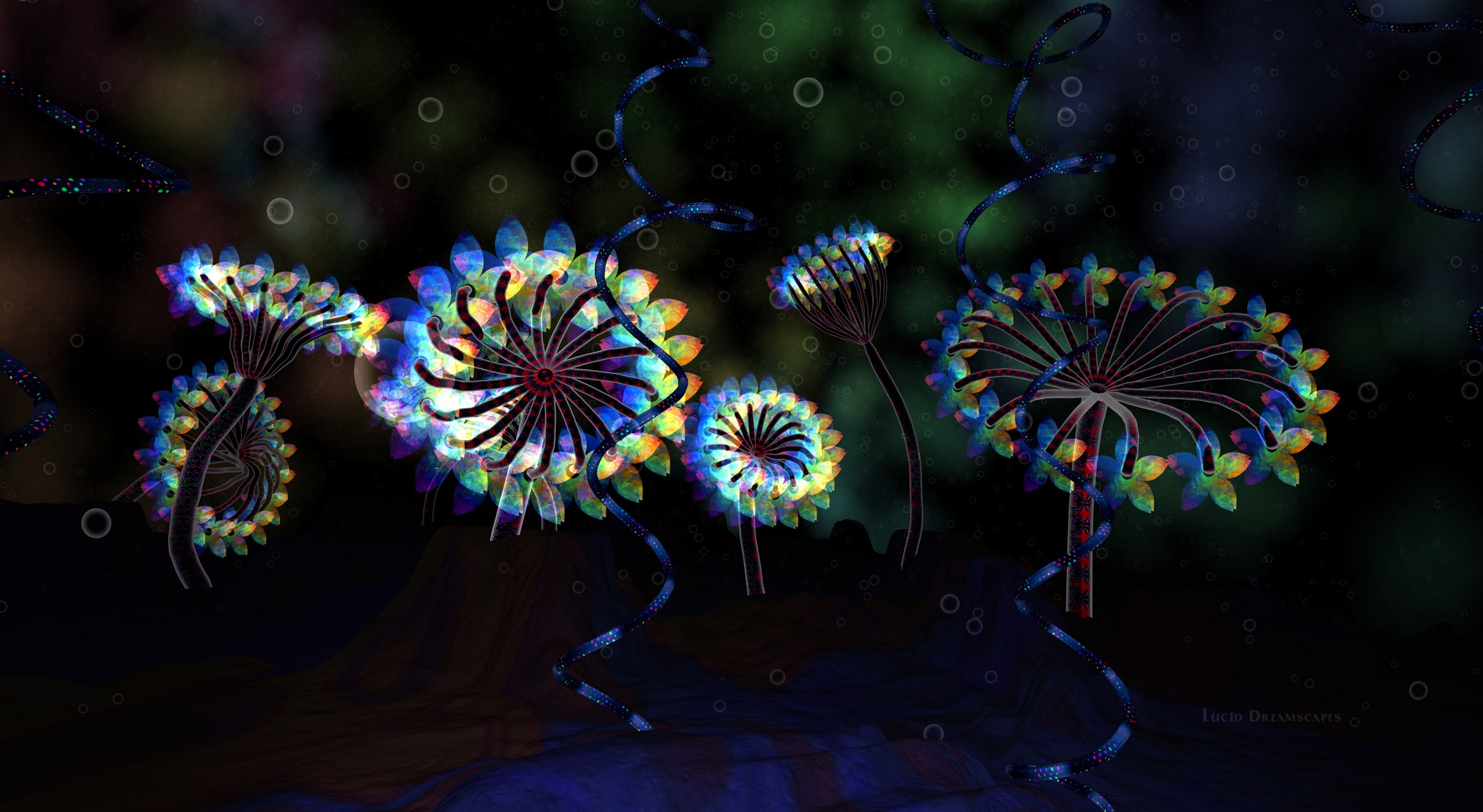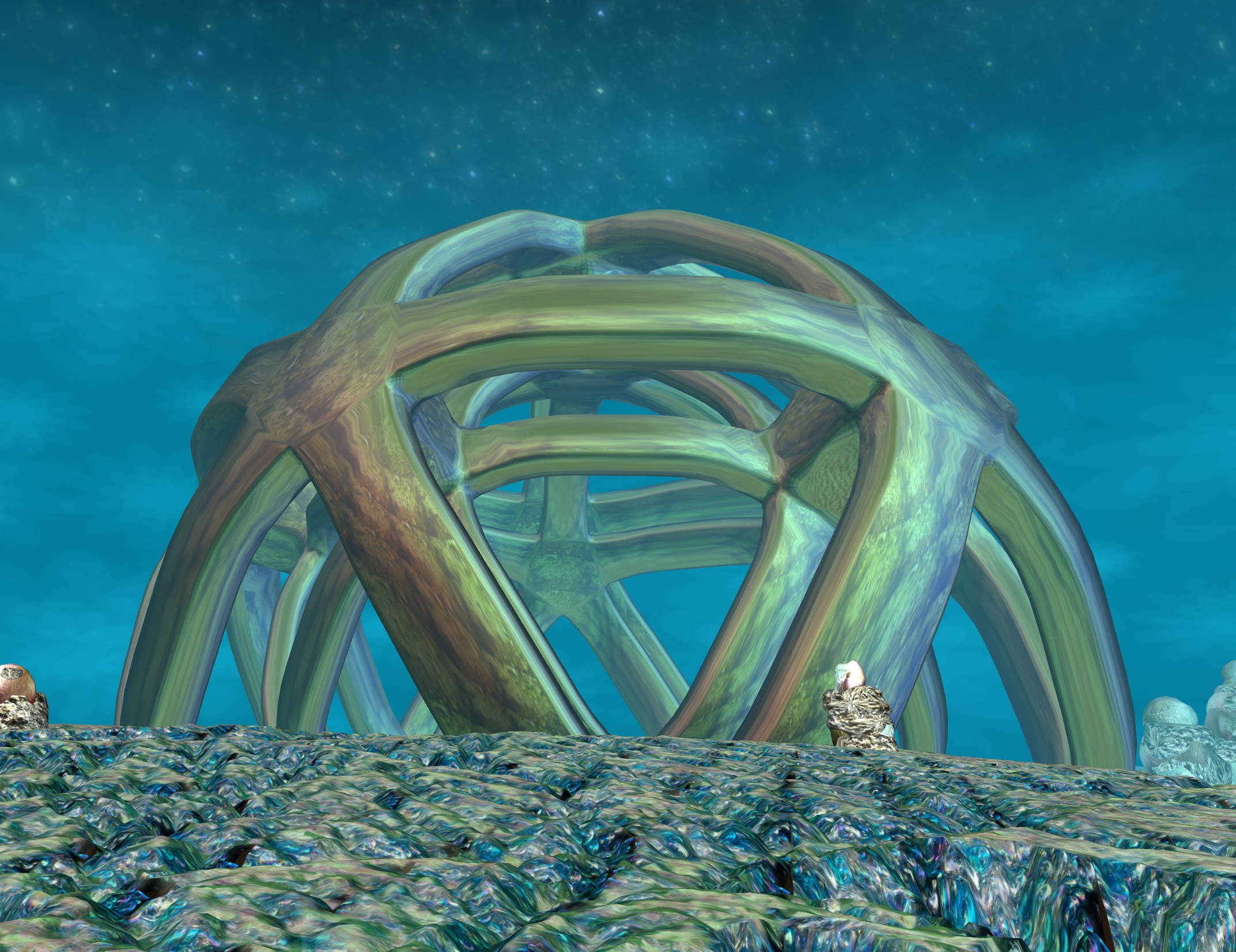The VR exploration of an Interdisciplinary Artist

J-Walt is a director, interactive designer, filmmaker, performer, graphic artist, music composer, and VR pioneer. For more than a quarter century, he has been at the forefront of interactive art and computer performance, expanding the uses of computer animation into uncharted territories.
VeeR: Tell us something about yourself and Lucid Dreamscapes! It seems that you used to work for Disney, but Disney productions look quite different from your own work. Are there any influences over you during your time there?
J-Walt: Disney is a strong brand because it encompasses a particular style. There’s a lot of other styles to explore, a lot of other ideas that Disney won’t touch. I’m happy being independent, because get to venture out to find new things to say and to create, and to focus on my personal style and the passions that I have.
I was part of Walt Disney Imagineering, which creates attractions for the theme parks. I worked alongside many creative and technical experts from a wide variety of fields. The experience opened taught me to think across disciplines. Art doesn’t have to stay in one category. You can mix dance and drawing, music and sculpture. You can merge things and create hybrids however you want.
This is the thinking that inspired me to embrace performance as a fundamental part of my creative process. I come from an animation background, which is traditionally a studio art. Performance is something else, and I’ve been inventing my own ways of merging the two.

Anitar (Photo by Trey Stokes)
VeeR: Often in the video description you would say “I created and performed this visionary spectacle live/realized in my real-time system.” What do the sentence and real-life system mean respectively?
J-Walt: I create VR worlds for stage performance. I’m like a visual musician, creating these scenes which unfold over time. The 360 movies that I post on VeeR are each a recording of a studio performance. Think of how a musician can either perform on stage or in the studio. It’s the same thing for me. I created a system in which modelling and animation happen in real-time. It’s taking interactive techniques and using them for performance.
There’s a magic that happens when we create something out of nothing. For painters and animators, that typically happens in the studio. I wanted to find a way of sharing that creative exploration with an audience, which is why I focus on performance. I focus on real-time creation, so I can celebrate the act of creation, rather than just the resulting artifact.

Entrancing Visual Spectacle (Photo by Trey Stokes)
VeeR: Does your work reflect your life philosophy? What are some of your beliefs that are illustrated in your works? Have you ever thought of making your work into something eternal?
J-Walt: Something eternal! That’s a good question. I’m working in the opposite direction, focusing on art that is fleeting and ethereal.
As artists, we do want to see our art outlive us. We don’t like the thought of our art just disappearing and being forgotten. A lot of us hope to be immortal through our art. I think that’s risky, and probably even foolish.
I think a lot about art, how artists create it, and how people consume it. I think especially about digital art, which I’ve been doing for over 30 years. One of the amazing aspects of digital media is that we can create with greater ease and in greater volumes than ever before. We as artists must contend with this in one way or another. If we’re not careful, we can get bogged down.
I’ve decided to embrace the volatility of the digital realm. As easily as I can assemble bits into structures, I can let them disperse into unorganized potential. When I don’t hold onto my creations, I avoid being too precious about them, which allows me to experience a larger idea that is formed by the infinite variations of an idea.
This means that most of the art I’ve created has already been lost, almost immediately after I create it. And that’s okay. It makes more room for tomorrow’s adventures.
VeeR: Where do you usually get your inspiration from? How is it possible to keep finding inspirations for your work?
J-Walt: I’m inspired by art, by nature, music, science, science fiction, psychology, comedy, philosophy, physical phenomena… a lot of things! My ideas outpace my time and energy. I feel like I’ve barely started on a road of discovery.

J-Walt Performing with Hydra (Photo by Trey Stokes)
VeeR: What is your own perception/definition/understanding of lucid dream? Lucid dreams, as compared to normal dreams, are more like a surreal reality. Traditional films are dreams, and VR feel more real than traditional films. Does it mean that Lucid Dream can be better manifested in VR?
J-Walt: I dream a lot. I have dreams when I sleep, and when I’m awake. I often feel like the dreaming part of my mind is always going, and I just have to close my eyes to be aware of it.
Lucid dreaming is when you’re aware you’re in your dream and you become a conscious and active participant in the dream, instead of just treating the dream as a movie that you are watching.
Interactive art and performance art blurs the line between reality and imagination. VR is part of that evolution of creative technology. When you start to blur the line between what is real and imagined, that conscious active participation can be the same in the real world as well as in our fantasies. When we decide to act on our desires, we shape our future. It can start with shaping our dreams, and we can use that inspiration to create our real future. We can make our dreams come true.
VeeR: I am really surprised that you can think of transforming fireworks into dandelions! How did you think of this and other type of transformations in your works?
J-Walt: Thanks! I can’t take credit for that metaphor, but it was fun to revisit. Part of embracing a fluid reality is looking for ways of transforming from one state to another. The process of abstraction helps with this. A shape such as a spiral can imply a whirlpool, or a galaxy, or both at the same time. I try to explore a transformation in each of my works, so that I can express a connection between what we are experiencing to something else. It’s a way of thinking interdimensionally.

J-Walt in the Dome (Photo by Trey Stokes)
VeeR: What are your criteria in choosing colors? Do you think color is a significant element in creating fantasy worlds and lucid dreams? Why?
J-Walt: My color palettes are chosen for the way I intend to present a work. My online work is different from my print work, and different from when I perform in full-dome theaters. I try to find an appropriate energy for my color palette, something which works for the format but also for the level of energy that I’m trying to achieve with the overall piece. There’s also a lot of joy that I put into my work, and I hope people find joy in it. I think that has a lot to do with my color palette as well!



